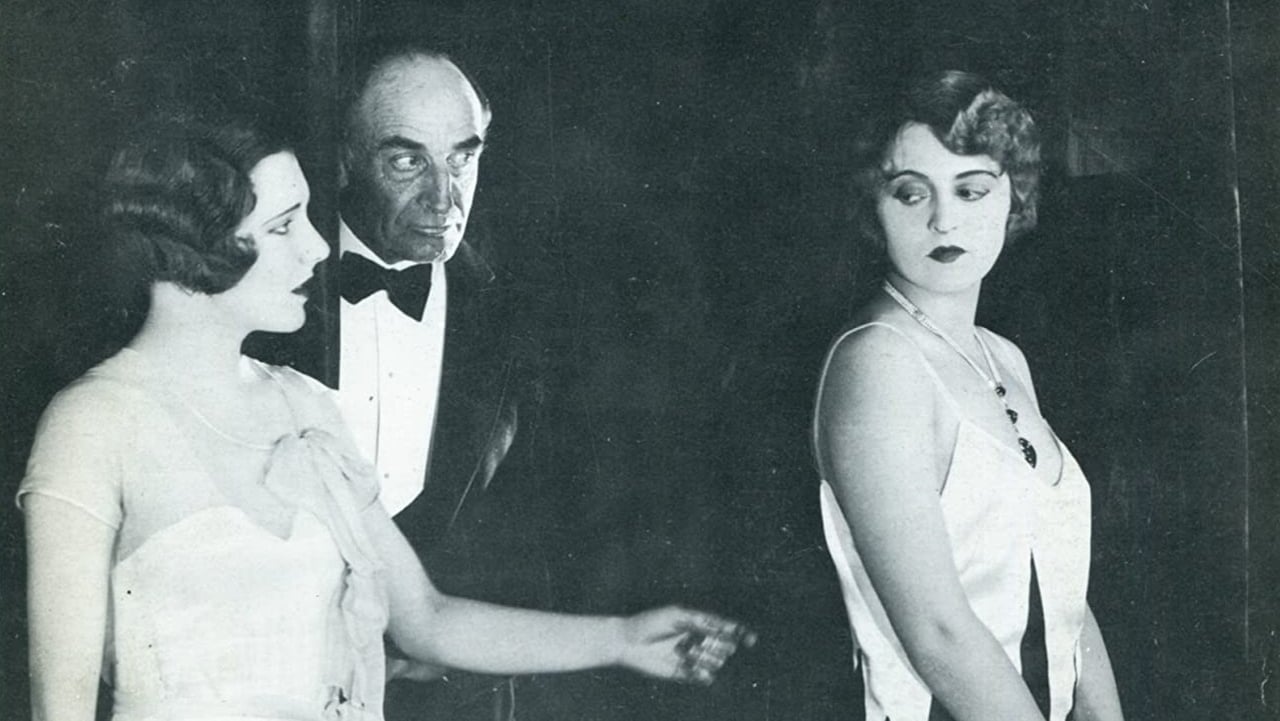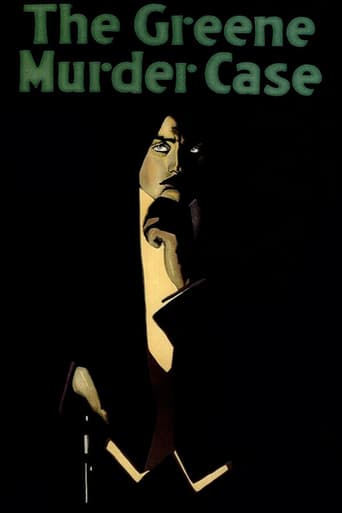

This Movie Can Only Be Described With One Word.
... View MoreOverrated and overhyped
... View Moren my opinion it was a great movie with some interesting elements, even though having some plot holes and the ending probably was just too messy and crammed together, but still fun to watch and not your casual movie that is similar to all other ones.
... View MoreMostly, the movie is committed to the value of a good time.
... View MoreThe Greene family is abiding by a strange will that required them to stay in their mansion. The problem is that SOMEONE there is a maniac and is killing people! Can Philo Vance (William Powell) get to the bottom of this and prevent more killings?"The Greene Murder Case" played a lot better back in 1929 than it does today. Today, it seems very dull and much of this can be attributed to the way they made movies back in 1929. Like most films of the day, this one lacked incidental music and was very low energy--probably because actors were stuck standing near hidden microphones. Additionally, all too often, our hero, Philo Vance makes insane guesses and makes them seem true when he's really just pulling it out of thin air!.
... View More...and how far his film persona has traveled since 1928's Forgotten Faces! In the silent era, Powell had played a heavy. But that distinguished sounding voice may not have been what the audience expected, but it was what they wanted once they heard it. So parts arrived for him that matched that distinguished voice.This film opens with the dysfunctional Greene family going over the terms of the late Mr. Greene's will that says the family must live in the estate for 15 years before anything more than living expenses is awarded to any of the heirs. All share equally, and if any die or decide to live somewhere else, their share is distributed to the others. They are 10 years into the 15 years, so New Year's Eve 1934 gives them all their money and their freedom. And none of them likes the other. Mrs. Tobias Greene is bedridden because she cannot walk. Ada (Jean Arthur) dotes on her, and Ada is always being taunted by Sibella Greene (Florence Eldridge) as an outsider since she is adopted. Sibella has some secret between herself and her mother's doctor.Then, one by one the members of the Green family begin turning up dead. The police call in Philo Vance to help, and lest the audience think it strange that a civilian is helping in police matters, several references are made to "The Canary Murder Case" in which Vance solved the crime. Vance keeps emphasizing that these things usually boil down to psychology, and that is his focus throughout the film - the psychology of the members of the Greene family, both the dead and the living. Did I mention that the servants share some in the will too and there are some very strange household servants? Eugene Palette plays Sgt. Ernest Heath of the police, and does the most interfacing with Vance. Paramount paired Powell and Palette quite a bit in the early years of sound and their contrast seemed to be very synergistic, both of them with trademark voices of a very different kind from one another.I'll let you watch and see how this all turns out. There are quite a few surprises in the plot. I'd recommend it.
... View MoreThis was possibly made right after Cecil B. Demille's first talkie ,when he removed the camera out of the sound booth and had it covered up with towels ,so that the camera could move .There are some shots ,like in the hallway,where William Powell and Eugene Pallet are disusing the murder and the camera is following them.that's not zoom lenses.For some reason they don't get a lot of close ups.Obviously the camera was very heavy.This is an early Philo Vance mystery on film starring William Powell ,who would repeat his role in later films.A very young Jean Aurthur Frederich Marches wife,Florence Eldridge, is in it too.I don't know if this was her first talkie,it might have been.The adult Children Green,played by Florence Eldridge as Sibella ,Jean Aurthur as Ada,a fat Lowell Drew as Chester and Morgan Farley as Rex .Under their fathers will they all have to stay in the house for 15 years in order to inherit their fathers money.Their mother is an invalid,unable to walk,played by Gertrude Norman as the widow.Very controlling against her adult children.Then their the German cook or maid,Gertrude played by Augusta Bermiester.It seemed that their late father had business in Germany and taught his kids the language.One night some one shows up at Chester's room and shoots him.Then Ada gets shot but is injured.It's time for William Powell and Eugene Palette to go to the Greene's house and investigate.The families personal doctor,also German American,Dr Arthur Von Blon,what a name,played by Ullrich Haupt, does the autopsy.He and Sibella have a yen for each other.Then Morgen Farley gets killed.The surprising result of this film it turn out that Jean Arthur has been killing the family ,poisoning her mother,so she can get the inheritance.But, she ends up getting killed as she tries to push Florence out of the balcony into the cold lake.Aurthur end up in the lake instead.Powell Rescues Eldridge from the second story of the house.This was the only time Jean played a bad guy.nice early talkie.Available at Amazon,Bonanza,i offers. 02/14/13
... View MoreThe Greene Murder Case was William Powell's second of four ventures in the role of society detective Philo Vance. In this film, he's called in as a whole family named Greene, rich society folks like Vance himself keeps getting knocked off one at a time. As Eugene Palette as Sergeant Heath says, they'd have to be crazy to keep committing the crimes while Vance and he are actually in the house investigating. Insanity is a key element in The Greene Murder Case.The house itself holds a few clues as to the identity. And it plays a part in the crimes as they unfold because as we learn right at the beginning of the film, the terms of the late Mr. Greene has that the whole family has to live together, if not happily under the same roof for fifteen years before they can inherit. Only in these old murder mysteries do they come up with wills like that.The Greene family is an interesting lot in and of themselves. Mother Gertrude Norman is bedridden, but keeps a tyrannical reign over her kids who consist of flapper Florence Eldridge, doormat Jean Arthur, and a pair of worthless trust fund baby sons in Morgan Farley and Lowell Drew. The Greene Murder Case is probably the weakest of the four William Powell Philo Vance cases. It relies on some really way out solutions for Powell to identify the culprit. And if you're any kind of fan of these films you will know about a third of the way through who the murderer was. Let's say the culprit has what looks to be an airtight alibi for all the murders, especially the second of the three.Powell of course is as debonair and smooth as always. As I did in seeing The Canary and Benson Murder Cases, I do marvel at the way Powell was able to immediately adapt almost by instinct to the requirements of talking pictures. Definitely a film if you are a fan of his.
... View More